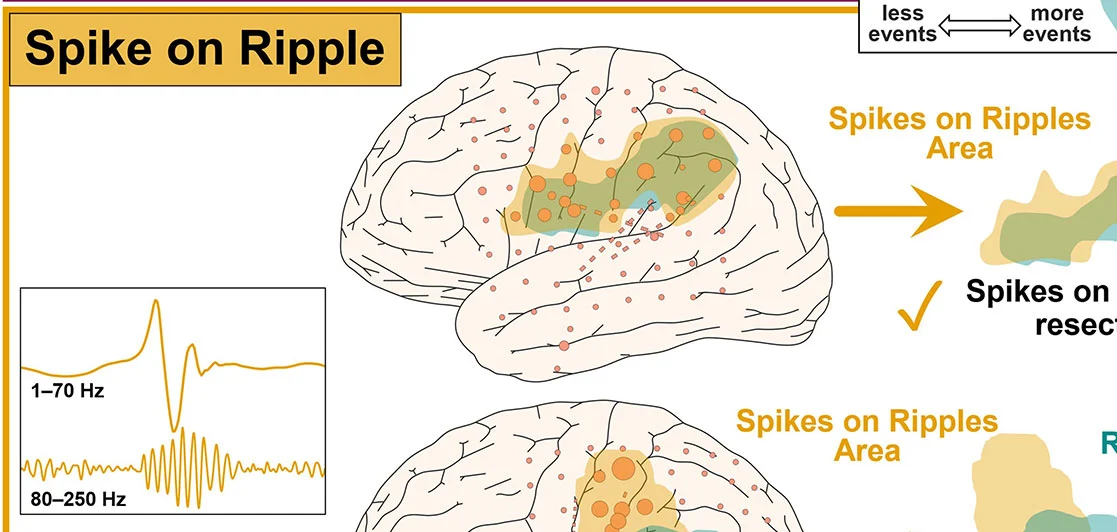The Genomic Landscape Across 474 Surgically Accessible Epileptogenic Human Brain Lesions
October 17, 2022
Abstract found on Oxford University Press
Understanding the exact molecular mechanisms involved in the etiology of epileptogenic pathologies with or without tumor activity is essential for improving treatment of drug-resistant focal epilepsy. Here, we characterize the landscape of somatic genetic variants in resected brain specimens from 474 individuals with drug-resistant focal epilepsy using deep whole-exome sequencing (>350×) and whole-genome genotyping. Across the exome, we observe a greater number of somatic single-nucleotide variants (SNV) in low-grade epilepsy-associated tumors (LEAT; 7.92?±?5.65 SNV) than in brain tissue from malformations of cortical development (MCD; 6.11?±?4 SNV) or hippocampal sclerosis (HS; 5.1?±?3.04 SNV). Tumor tissues also had the largest number of likely pathogenic variant carrying cells. Low-grade epilepsy-associated tumors (LEAT) had the highest proportion of samples with one or more somatic copy number variants (CNV; 24.7%), followed by MCD (5.4%) and HS (4.1%). Recurring somatic whole chromosome duplications affecting Chromosome 7 (16.8%), chromosome 5 (10.9%), and chromosome 20 (9.9%) were observed among LEAT. For germline variant-associated MCD genes such as TSC2, DEPDC5, and PTEN, germline SNV were frequently identified within large loss of heterozygosity regions, supporting the recently proposed ‘second hit’ disease mechanism in these genes. We detect somatic variants in twelve established lesional epilepsy genes and demonstrate exome-wide statistical support for three of these in the etiology of LEAT (e.g., BRAF) and MCD (e.g., SLC35A2 and MTOR). We also identify novel significant associations for PTPN11 with LEAT and NRAS Q61 mutated protein with a complex MCD characterized by polymicrogyria and nodular heterotopia. The variants identified in NRAS are known from cancer studies to lead to hyperactivation of NRAS, which can be targeted pharmacologically. We identify large recurrent 1q21-q44 duplication including AKT3 in association with focal cortical dysplasia type 2a with hyaline astrocytic inclusions, another rare and possibly under-recognized brain lesion. The clinical genetic analyses showed that the numbers of somatic SNV across the exome and the fraction of affected cells were positively correlated with the age at seizure onset and surgery in individuals with LEAT. In summary, our comprehensive genetic screen sheds light on the genome-scale landscape of genetic variants in epileptic brain lesions, informs the design of gene panels for clinical diagnostic screening, and guides future directions for clinical implementation of epilepsy surgery genetics.






